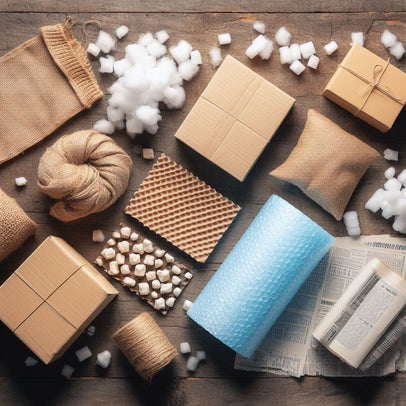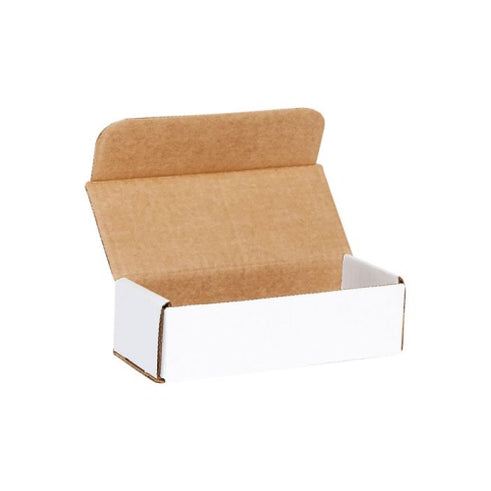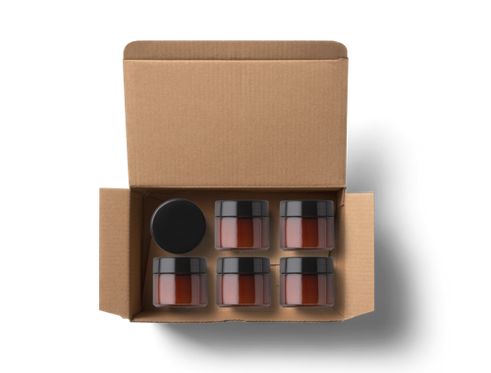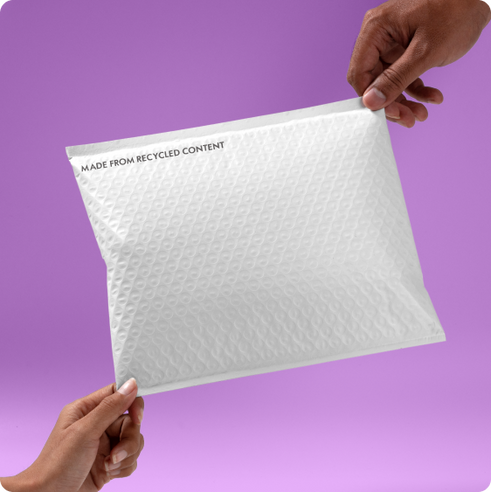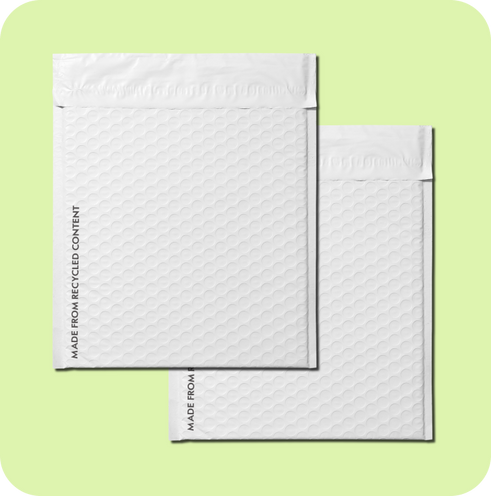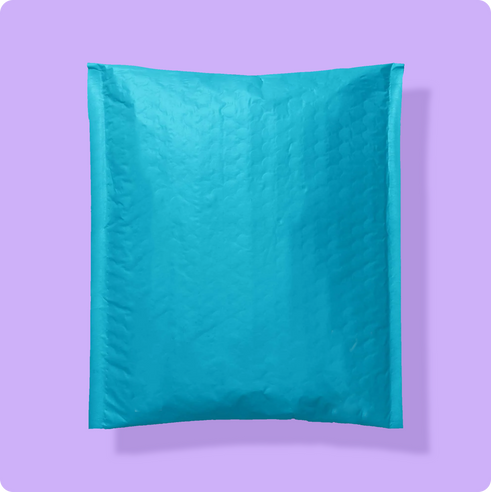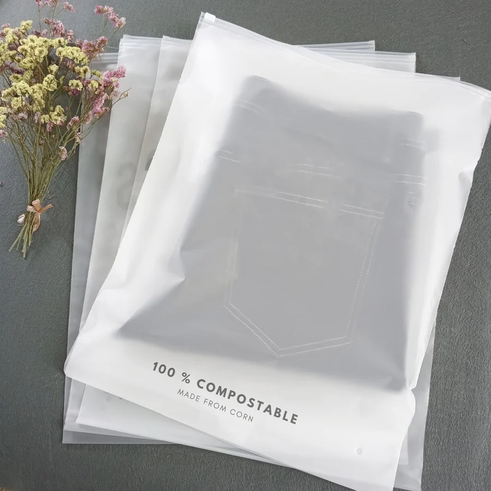Packaging 101: The Complete Guide
- Packaging 101
- Types of Packaging
- Aseptic Packaging
- Blister Packaging
- Biodegradable Packaging
- Bulk Packaging
- Carbon Neutral Packaging
- Circular Packaging
- Clamshell Packaging
- Compostable Packaging
- Cornstarch Packaging
- Corrugated Packaging
- Discreet Packaging
- Ecommerce Packaging
- Flexible Packaging
- Frustration Free Packaging
- Retail Packaging
- Secondary Packaging
- Smart Packaging
- Sustainable Packaging
- What is a PR Package?
- What is a Poly Mailer?
- Packaging Design Ideas
- AI Packaging Design
- Bakery Packaging Ideas
- Bath Bomb Packaging Ideas
- Bath Salt Packaging Ideas
- Body Butter Packaging Ideas
- Body Oil Packaging Ideas
- Body Scrub Packaging Ideas
- Brownie Packaging Ideas
- Cake Packaging Ideas
- Cake Pop Packaging Ideas
- Candle Packaging Ideas
- Candy Packaging Ideas
- Canva Packaging Design
- Chocolate Packaging Ideas
- Cinnamon Roll Packaging Ideas
- Clothing Packaging Ideas
- Coaster Packaging Ideas
- Coffee Bag Design Ideas
- Cookie Packaging Ideas
- Cosmetics Packaging Design
- Cotton Candy Packaging Ideas
- Cupcake Packaging Ideas
- DIY Packaging Ideas
- Dog Treat Packaging Ideas
- Food Packaging Ideas
- Empanada Packaging Ideas
- Etsy Packaging Ideas
- French Fries Packaging Ideas
- Frozen Food Packaging Ideas
- Hair Extension Packaging Ideas
- Handbag Packaging Ideas
- Jewelry Packaging Ideas
- Keychain Packaging Ideas
- Lash Packaging Ideas
- Lip Gloss Packaging Ideas
- Macaron Packaging Ideas
- Minimalist Packaging Ideas
- Mug Packaging Ideas
- New Employee Welcome Kit Ideas
- Packaging Colors
- Packaging Inserts Ideas
- Packaging Logo Design
- Packaging Typography
- Perfume Box Design Ideas
- Pizza Box Design Ideas
- Popcorn Packaging Ideas
- Scarf Packaging Ideas
- Skincare Packaging Design Ideas
- Soap Packaging Ideas
- Sock Packaging Ideas
- Sticker Packaging Ideas
- Sunglass Packaging Ideas
- Sustainable Packaging Ideas
- Tea Packaging Ideas
- Wax Melt Packaging Ideas
- Weed Packaging Ideas
- T-Shirt Packaging Ideas
- Wine Packaging Design Ideas
- What is a Packaging Engineer?
- Types of Packaging Materials
- Chipboard vs Cardboard
- Compostable Packaging Materials
- Alternatives to Plastic Packaging
- Edible Packaging Materials
- Food Packaging Materials
- Are Poly Mailers Recyclable?
- How to Recycle Cardboard Boxes
- How to Recycle Packaging Materials
- Medical Device Packaging Materials
- Mono Material Packaging
- Pharmaceutical Packaging Materials
- Plastic Food Packaging
- Protective Packaging Materials
- Reusing Packaging Materials
- Types of Packaging Foam
- Void Fill Packaging
- What is Chipboard?
- What is Kraft Paper?
- Offset vs Digital Printing
- RGB vs CMYK Printing
- Screen Printing vs Digital Printing
- Screen Printing vs Sublimation
- What is a Dieline in Packaging?
- What is Die Cutting?
- What is Digital Printing?
- What is Flexographic Printing?
- What is Glassine Paper?
- What is Offset Printing?
- What is Spot UV Printing?
- Why is 300 DPI Good for Printing?
- How to Estimate Shipping Costs
- How to Pack Glass for Shipping
- How to Mail a Bubble Mailer
- How to Make a Shipping Label
- How To Measure Box Dimensions and Sizes
- How to Ship Alcohol
- How to Ship Artwork
- How to Ship Books
- How to Ship a Cake
- How to Ship Candles
- How to Ship Clothes
- How to Ship Cookies
- How to Ship Food
- How to Ship a Laptop
- How to Ship a PC
- How to Ship Plants
- How to Ship Shoes
- How to Ship Vinyl Records
- Packaging Symbols
- Shipping Large Items
- What is a Delivery Exception?
- What is Shipping Insurance?
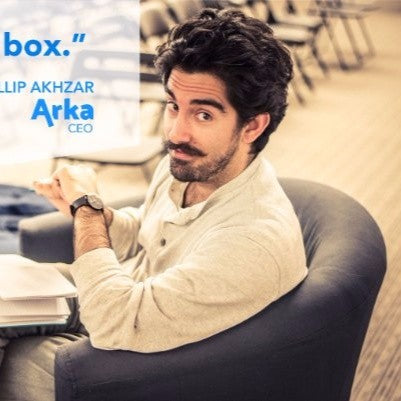
Discover Phillip Akhzar’s journey, the Founder and CEO of Arka, bringing 16 years of expertise in packaging and supply chain logistics. Read more on Arka.
The Importance of Packaging Materials
One of the primary purposes of different types of packaging materials is to protect the products they encase. Delicate items demand robust packaging to thwart damage during transit. Bubble wrap, foam, and corrugated cardboard are usual materials safeguarding products in transit.
Packaging materials double as vital product info platforms. Labels, tags, and custom stickers, created from different types of materials used for packaging, convey details like ingredients, instructions, and expiry dates. This informs consumers and meets regulatory standards.
Packaging materials play a key role in marketing and sales. Unique, appealing designs captivate customers, setting products apart. Eco-friendly materials, emphasizing sustainability, resonate with eco-conscious consumers, positively impacting sales.
The modern focus is on sustainable packaging. Companies increasingly opt for different types of packaging materials that are biodegradable, recyclable, or made from renewable sources. This eco-friendly approach cuts carbon footprint and boosts brand image, showcasing environmental commitment.
Exploring Types of Packaging Materials: Benefits and Challenges
So what are the common materials used in packaging? When it comes to packaging materials, there is no one-size-fits-all solution. Different types of packaging materials offer various benefits and come with their own set of challenges. Understanding the diverse options available is crucial for businesses aiming for effective, sustainable packaging solutions. Here are some of the benefits and challenges of these packaging materials
Cardboard
Cardboard, a stalwart in packaging, appears in various products, such as custom mailer boxes, corrugated boxes, and shipping boxes. It's more than material; it's an eco-friendly solution aligning with sustainability goals. Benefits include versatility, protection, eco-friendliness, and customizability. Challenges involve limited moisture resistance and weight limits for heavy items.

Plastic
Plastic packaging, including polyethylene (PE), polypropylene (PP), and polyethylene terephthalate (PET), offers durability and flexibility, and are the main types of packaging materials for shipping and retail. Despite benefits like protection and versatility, plastic raises environmental concerns; Solutions like recycled plastic and bioplastics, made from renewable sources, are emerging.
They reduce environmental impact and decompose naturally, yet face challenges of scalability, cost, and awareness, highlighting the ongoing struggle to balance practicality with eco-consciousness.

Glass
Glass, though heavy, offers a premium, sustainable option for products like beverages and cosmetics. Its impermeability preserves products without contamination. While 100% recyclable, its weight impacts transportation costs. Despite this, its premium appeal and eco-friendly traits make it a preferred choice for high-end products.

Wood
For centuries, wood has been a packaging mainstay prized for its durability. It forms sturdy crates and pallets, ideal for heavy items, ensuring safe travels. Despite its eco-friendly nature, challenges arise. Deforestation concerns loom large, and the weight of wood can hike shipping costs. Plus, moisture poses a risk, especially on long journeys. The balance between tradition and innovation in packaging continues.

Paper
Paper packaging is a versatile choice for various products; It includes custom tissue paper for delicate items, custom kraft mailers for secure lightweight shipping, Custom stickers for branding and labeling, custom food wrapping Paper for fresh and attractive food display, wax paper for non-stick food packaging, custom hangtags for branding clothing and accessories, custom cards for messaging and chipboard for sturdy packaging.
Here are a few benefits of paper packaging:
• Eco-Friendly: Biodegradable and recyclable.
• Versatile: Adaptable to different shapes and sizes.
• Cost-Effective: Budget-friendly option.
• Customizable: Easily branded, enhancing visibility.
• Consumer-Friendly: Easy to handle and dispose of responsibly.
Despite having many benefits, here are a few challenges of paper packaging:
• Durability: Less protection for fragile items.
• Environmental Impact: Production consequences like deforestation.
• Moisture Sensitivity: Susceptible to moisture damage.
• Weight Limitations: Not suitable for heavy-duty packaging.

Metal
Metal packaging, like aluminum and steel, offers strong, versatile protection for products during shipping. They resist damage and can be shaped uniquely for branding. However, their weight can raise shipping costs, and improper recycling harms the environment. Yet, advances in recycling tech are making metal packaging more sustainable.

Textiles: Jute, Cotton, Canvas
Textile materials such as jute, cotton, and canvas are often chosen for their natural and rustic appeal. They are biodegradable and can be reused, contributing to sustainability. However, textiles may not provide the same level of protection as other materials, and they can be susceptible to wear and tear.

Foam and Cushioning Materials
Polystyrene foam and similar cushioning materials excel in protecting fragile items during shipping. They are lightweight and cost-effective, reducing shipping expenses. On the downside, foam materials are not biodegradable and may contribute to environmental concerns.

Biodegradable and Eco-friendly Materials
In response to environmental concerns, many businesses are turning to eco-friendly and biodegradable packaging materials. These materials, often derived from plant-based sources, decompose naturally, reducing long-term environmental impact. However, their availability and cost-effectiveness can be limiting factors for some businesses.

Composites: Tetra Pak, Multi-layer Films
Composite materials like tetra pak and multi-layer films combine different materials to create packaging with unique properties. Tetra pak, for example, is widely used for liquid packaging due to its excellent shelf life. However, recycling composites can be challenging and may not fit well within existing recycling systems.

Flexible Pouches
Flexible pouches are gaining popularity for their lightweight design and convenience. They are often used for items like snacks and liquids. While flexible pouches reduce packaging waste, they may not offer as much protection as rigid materials.

Uses of Different Types of Packaging Materials in Industries
Packaging materials play a crucial role in safeguarding products, ensuring their integrity during transportation and enhancing their shelf appeal. Various industries rely on an array of packaging materials tailored to their specific needs. Let's explore the diverse applications of different types of packaging materials across various sectors.
Food Packaging
• Cardboard packaging is a versatile choice for the food industry. It's commonly used for cereal boxes, custom pizza boxes, and takeaway containers. Its sturdiness and printable surface make it ideal for branding and product information.
• Plastic is ubiquitous in food packaging, found in bottles, jars, and bags. It offers excellent product visibility and protection against moisture and contaminants. Plastic is lightweight, cost-effective and recyclable.
• Glass containers are ideal for preserving the flavor and freshness of food products. They are impermeable, non-reactive, and maintain the integrity of the contents. Glass jars for jams and sauces are classic examples.
• Paper packaging, like kraft paper bags, is eco-friendly and often used for bakery items and fast food. It's biodegradable, easy to customize, and offers a rustic charm.

Electronics Packaging
• Cardboard boxes play a pivotal role in shipping and storing electronic devices. They provide cushioning and protection during transit and are easily recyclable.
• Plastic blister packs and trays are common for packaging small electronic components. They offer visibility, durability and protection from electrostatic discharge.
• Foam inserts, bubble wrap and foam peanuts are essential for safeguarding fragile electronics. They absorb shocks and prevent damage during shipping.

Pharmaceutical Packaging
Here are the most common types of packaging materials used in pharmaceuticals:
• Plastic bottles, vials and blister packs are crucial for pharmaceutical products. They ensure product integrity, tamper-evident sealing, and precise dosing.
• Glass vials and ampoules are preferred for injectable drugs due to their inert nature and ability to maintain sterility. They also offer excellent visibility for liquid medicines.
• Pharmaceutical labels, leaflets and packaging made of paper provide consumers with essential information such as dosage instructions and warnings.

Cosmetic Packaging
• Plastic bottles, jars and tubes dominate the cosmetic industry; They are versatile, customizable, and lightweight. Transparent plastic showcases the product, while opaque options protect light-sensitive contents.
• Luxury cosmetics often come in glass containers; Glass exudes elegance and preserves the quality of premium products like perfumes and serums.
• Metal packaging, such as aluminum cans is ideal for aerosol sprays and products requiring a long shelf life. It offers protection against oxygen and UV rays.
At Arka, we offer top-notch custom cosmetic boxes that help enhance brand awareness and drive more sales! Let’s create your memorable packaging now.

Sustainable Packaging
As environmental concerns grow, industries are shifting towards sustainable packaging. Biodegradable materials like cornstarch-based plastics and eco-friendly options like bamboo and recycled paper are gaining popularity, and many industries are using cornstarch packaging. These materials reduce environmental impact and appeal to eco-conscious consumers.

5 Tips for Choosing the Right Packaging Material
When it's time to package your products, the material you choose is vital. It affects your items' safety, budget, environmental impact, and brand perception. Here are five key tips to guide your choice:
1. Consider Product Characteristics
Consider your product's size, fragility, weight, and perishability. Delicate items need cushioning, while heavy ones require sturdy materials. Match the packaging to your product's unique needs to prevent damage during shipping.
2. Understand Shipping Requirements
Understand the distance, transit time, and shipping method. Choose durable materials for long journeys and packages that might be stacked. Different carriers have different guidelines, so ensure your packaging meets their requirements.
3. Budget Constraints
Consider your budget; materials come at different prices. Find a balance between cost, material quality, and customization. Custom packaging might be more costly but can enhance your brand.
4. Environmental Impact
Embrace eco-friendly materials; Recyclable or biodegradable options improve your brand's image. Optimize packaging size to reduce waste and adhere to environmental regulations. Be mindful of your carbon footprint.
5. Branding and Presentation
Consider your brand's aesthetic; Packaging is often the first touchpoint with your customers. Choose packaging materials that reflect your brand's image. Customized packaging creates a lasting impression and should be easy for customers to open.
Considering these factors, you ensure your packaging protects your products and positively contributes to your brand and the environment.
Final Thoughts
The diverse types of packaging materials reflect the need to balance functionality, convenience, and environmental responsibility. Businesses must assess these materials' pros and cons for the environment as consumers' informed choices and support for sustainability can push the industry toward eco-friendly options, securing a greener future.
At Arka, we offer expertise and a range of eco-friendly packaging solutions. We empower companies to choose environmentally conscious options, improving their brand image and contributing to a greener world.
FAQs on Packaging Materials
What is the most eco-friendly packaging material?
Imagine eco-packaging as Earth's superhero squad; biodegradable plastics, recycled cardboard and cornstarch-based polymers. They naturally decompose, leaving no harm, turning packaging into compost, benefiting products and the planet.
Can packaging materials impact product shelf life?
Packaging isn't just a container; it's a time-traveling protector. Vacuum-sealed plastics and aseptic cartons preserve freshness by blocking light, air, and moisture. They extend shelf life, ensuring quality from first purchase to last use.
How can I ensure that my packaging materials comply with regulations?
Regulations are like treasure maps. Equip yourself with transparency and industry-specific knowledge. Engage a compliance team and experts. Stay updated, transforming compliance from a maze into a manageable path, ensuring materials exceed standards.
